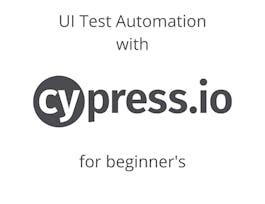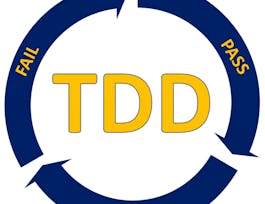Behavior Driven Development (BDD) is revolutionizing the way software testing and development are approached, making it essential for professionals in the field to master. This course demystifies BDD by introducing you to Cucumber, a powerful tool that streamlines the testing process. Starting with the basics, you’ll learn how to create a Cucumber Maven project, write feature files using Gherkin language, and set up step definitions. Each module is designed to build your confidence, ensuring you grasp the fundamental concepts before diving into more complex topics.



Cucumber BDD Made Easy + Automation Framework Design

Instructor: Packt - Course Instructors
Sponsored by InternMart, Inc
Recommended experience
What you'll learn
Create a Cucumber Maven project from scratch.
Write and execute BDD scenarios using Gherkin language.
Integrate Cucumber with Selenium WebDriver for automation.
Design and implement a Page Object Model-based framework.
Details to know

Add to your LinkedIn profile
4 assignments
October 2024
See how employees at top companies are mastering in-demand skills


Earn a career certificate
Add this credential to your LinkedIn profile, resume, or CV
Share it on social media and in your performance review

There are 7 modules in this course
In this module, we will explore the foundational concepts of Behavior Driven Development (BDD) and guide you through setting up a Cucumber environment. You'll learn how to create Cucumber Maven projects, develop feature files using Gherkin syntax, and implement step definitions to bring your BDD tests to life. By the end of this section, you'll be equipped to run your BDD tests using JUnit test runners, ensuring a robust testing framework for your projects.
What's included
7 videos1 reading
In this module, we will delve into the various configuration options available in Cucumber, enabling you to tailor your BDD test executions. You'll learn how to set up features, glue, and plugins, and how to use the dry run and strict options to control test execution flow. Additionally, we’ll cover the monochrome and tags options for better output formatting and scenario filtering, along with the name option for precise scenario targeting, ensuring your tests run exactly as needed.
What's included
6 videos
In this module, we will integrate Selenium WebDriver with Cucumber, allowing you to perform browser-based testing within your BDD workflows. You'll learn how to craft Gherkin scenarios and write step definitions to test web applications interactively. Additionally, we will introduce global hooks, enabling you to manage test environments and actions that need to occur before or after each scenario, ensuring your tests are robust and efficient.
What's included
3 videos1 assignment
In this module, we will explore the use of parameters and data tables in Cucumber to make your tests more dynamic and data-driven. You'll learn how to use Cucumber parameters to pass different data sets into your step definitions and how to work with step data tables to handle more complex inputs. Additionally, we will cover scenario outlines, enabling you to perform data-driven testing by running the same scenario with multiple sets of data, thus broadening your test coverage and ensuring robust validation of your application.
What's included
3 videos
In this module, we will dive into the concepts of hooks and tags in Cucumber, which are essential tools for managing test execution flow. You'll learn how to use global hooks to define actions that run before or after all scenarios, and how to leverage tagged hooks for more granular control based on scenario tags. We will also cover how to prioritize hooks to control their execution order, and how to use Cucumber tags to organize and selectively run your scenarios. The module concludes with a summary to reinforce your understanding and ensure you are well-prepared to apply these concepts in your testing framework.
What's included
5 videos1 assignment
In this module, we will explore the integration of the Page Object Model (POM) within the Cucumber framework to create a robust and maintainable test architecture. You'll learn how to create a Page Factory for managing web elements, develop action pages that encapsulate user interactions, and construct common action pages for shared functionalities. By the end of this module, you'll be equipped to implement the Page Object Model in your BDD tests, ensuring your test code is scalable, modular, and easy to maintain.
What's included
4 videos
In this module, we will focus on enhancing the reporting capabilities of your Cucumber tests. You’ll learn how to add the Masterthought reporting plugin to generate comprehensive test reports, and how to capture screenshots automatically for any failed steps, making it easier to identify and resolve issues. The module concludes with a summary of the entire course, ensuring that you are equipped to apply what you've learned and continue developing your BDD expertise.
What's included
3 videos2 assignments
Instructor

Offered by
Why people choose Coursera for their career




Recommended if you're interested in Computer Science

Coursera Project Network

Coursera Project Network
 Status: [object Object]
Status: [object Object]

Open new doors with Coursera Plus
Unlimited access to 10,000+ world-class courses, hands-on projects, and job-ready certificate programs - all included in your subscription
Advance your career with an online degree
Earn a degree from world-class universities - 100% online
Join over 3,400 global companies that choose Coursera for Business
Upskill your employees to excel in the digital economy



